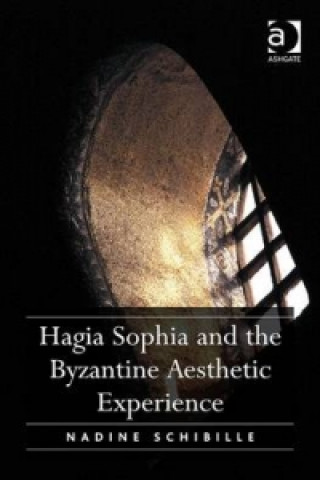
Kód: 04805147
Hagia Sophia and the Byzantine Aesthetic Experience
Autor Nadine Schibille
Paramount in the shaping of early Byzantine identity was the construction of the church of Hagia Sophia in Constantinople (532-537 CE). This book examines the edifice from the perspective of aesthetics to define the concept of bea ... celý popis
- Jazyk:
 Angličtina
Angličtina - Väzba: Pevná
- Počet strán: 320
Nakladateľ: Taylor & Francis Ltd, 2014
- Viac informácií o knihe

Mohlo by sa vám tiež páčiť
-

Hagia Sophia
97.47 € -

The Hagia Sophia: The History of the Famous Church and Mosque
12.26 € -2 % -
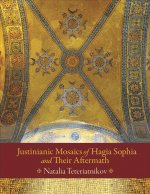
Justinianic Mosaics of Hagia Sophia and Their Aftermath
109.13 € -

Secret of Hagia Sophia
22.80 € -19 % -

Hamish McHaggis
9.81 € -5 % -

This Is Service Design Thinking
38.35 € -10 % -

Origins and Evolution of the European Union
59.52 €
Darujte túto knihu ešte dnes
- Objednajte knihu a vyberte Zaslať ako darček.
- Obratom obdržíte darovací poukaz na knihu, ktorý môžete ihneď odovzdať obdarovanému.
- Knihu zašleme na adresu obdarovaného, o nič sa nestaráte.
Viac informácií o knihe Hagia Sophia and the Byzantine Aesthetic Experience
Nákupom získate 422 bodov
 Anotácia knihy
Anotácia knihy
Paramount in the shaping of early Byzantine identity was the construction of the church of Hagia Sophia in Constantinople (532-537 CE). This book examines the edifice from the perspective of aesthetics to define the concept of beauty and the meaning of art in early Byzantium. Byzantine aesthetic thought is re-evaluated against late antique Neoplatonism and the writings of Pseudo-Dionysius that offer fundamental paradigms for the late antique attitude towards art and beauty. These metaphysical concepts of aesthetics are ultimately grounded in experiences of sensation and perception, and reflect the ways in which the world and reality were perceived and grasped, signifying the cultural identity of early Byzantium.There are different types of aesthetic data, those present in the aesthetic object and those found in aesthetic responses to the object. This study looks at the aesthetic data embodied in the sixth-century architectural structure and interior decoration of Hagia Sophia as well as in literary responses (ekphrasis) to the building. The purpose of the Byzantine ekphrasis was to convey by verbal means the same effects that the artefact itself would have caused. A literary analysis of these rhetorical descriptions recaptures the Byzantine perception and expectations, and at the same time reveals the cognitive processes triggered by the Great Church. The central aesthetic feature that emerges from sixth-century ekphraseis of Hagia Sophia is that of light. Light is described as the decisive element in the experience of the sacred space and light is simultaneously associated with the notion of wisdom. It is argued that the concepts of light and wisdom are interwoven programmatic elements that underlie the unique architecture and non-figurative decoration of Hagia Sophia. A similar concern for the phenomenon of light and its epistemological dimension is reflected in other contemporary monuments, testifying to the pervasiveness of these aesthetic values in early Byzantium.
 Parametre knihy
Parametre knihy
Zaradenie knihy Knihy po anglicky Humanities History History: earliest times to present day
170.39 €
- Celý názov: Hagia Sophia and the Byzantine Aesthetic Experience
- Autor: Nadine Schibille
- Jazyk:
 Angličtina
Angličtina - Väzba: Pevná
- Počet strán: 320
- EAN: 9781472437587
- ISBN: 1472437586
- ID: 04805147
- Nakladateľ: Taylor & Francis Ltd
- Hmotnosť: 754 g
- Rozmery: 241 × 159 × 25 mm
- Dátum vydania: 28. September 2014
Obľúbené z iného súdka
-

Histories
5.31 € -29 % -
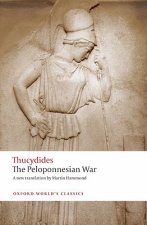
Peloponnesian War
12.47 € -28 % -

Rise and Fall of Ancient Egypt
17.48 € -28 % -

Spartans
14.41 € -23 % -

Making Medieval Manuscripts
17.28 € -19 % -

Shake Hands With The Devil
14 € -19 % -

Fall of Yugoslavia
11.45 € -28 % -

Caesar
18.71 € -23 % -

Forgotten Peoples of the Ancient World
26.48 € -27 % -

Yalta
14.82 € -30 % -

Exodus
17.17 € -23 % -

Dacia
46.22 € -

F-104 Starfighter Units in Combat
19.53 € -20 % -

Salem Witch Trials
20.24 € -28 % -

Alexander the Great
19.01 € -4 % -

On Tyranny
9.81 € -27 % -

From Third World to First
14.11 € -25 % -

King Leopold's Ghost
13.29 € -16 % -

Chernobyl Prayer
10.63 € -21 % -

Who Paid The Piper?
13.49 € -28 % -
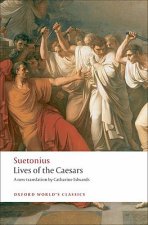
Lives of the Caesars
10.83 € -29 % -

Oxford History of Poland-Lithuania
63.81 € -

The Origins of Totalitarianism
10.42 € -23 % -

Guns, Germs, and Steel
16.76 € -

Illustrated Encyclopedia of Uniforms of World War I
20.65 € -27 % -

Postwar
16.46 € -24 % -
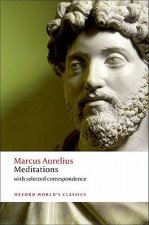
Meditations
8.58 € -24 % -

Chickenhawk
12.26 € -23 % -

Underground
10.93 € -24 % -

Creation of Patriarchy
25.87 € -

Complete Roman Army
20.55 € -28 % -
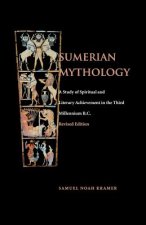
Sumerian Mythology
24.03 € -8 % -

Age Of Capital
15.43 € -28 % -

Age Of Extremes
17.17 € -23 % -

America's Secret Establishment
17.17 € -19 % -

Key of Solomon the King (Clavicula Salomonis)
10.42 € -

Travels of Ibn Battutah
11.45 € -28 % -

Yoga Body
18.71 € -12 % -

1913
10.93 € -27 % -

Armies of the Late Roman Empire AD 284 to 476
29.24 € -19 % -

Truman
18.40 € -32 % -

Anunnaki Homeworld
16.97 € -20 % -

Medusa
19.93 € -18 % -
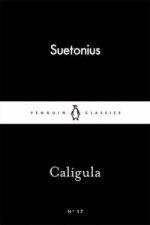
Caligula
3.47 € -26 % -

History of the Ancient World
33.13 € -8 % -

Thank You for Being Late
12.67 € -25 % -

Pakistan: A Hard Country
16.66 € -23 % -

Infidel
11.45 € -28 % -

Your Money or Your Life - Economy & Religion in The Middle Ages
17.99 € -19 %
Osobný odber Bratislava a 2642 dalších
Copyright ©2008-24 najlacnejsie-knihy.sk Všetky práva vyhradenéSúkromieCookies



 21 miliónov titulov
21 miliónov titulov Vrátenie do mesiaca
Vrátenie do mesiaca 02/210 210 99 (8-15.30h)
02/210 210 99 (8-15.30h)